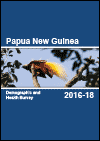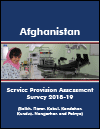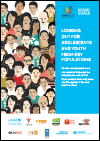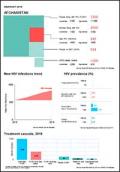What's New
Displaying results 501 - 510 of 4052

Resource | Publications,
The primary objective of the 2016-18 PNG DHS is to provide up-to-date estimates of basic demographic and health indicators. Specifically, the 2016-18 PNG DHS collected information on fertility, awareness, and use of family planning methods, breastfeeding practices, nutritional status of children, maternal and child health, childhood immunisation, adult and childhood mortality, women’s empowerment, domestic violence, malaria, awareness and behaviour regarding HIV/AIDS and other sexually transmitted infections (STIs), and other health-related issues.

Resource | Publications,
Each year, the AVAC Report frames the most pressing advocacy issues facing the HIV response. At the threshold of 2020, it’s clear that global goals for HIV prevention will miss the mark by a long shot. Though important progress has been made, the crisis UNAIDS called out in 2016 persists today with new infections around 1.7 million annually, a far cry from the 2020 target of fewer than 500,000. So, we asked ourselves, Now What?, and answered with cross-cutting analysis and an advocacy agenda to match.

Resource | Publications,
The 2018-19 Afghanistan Service Provision Assessment focused on tertiary/specialty and private hospitals. The assessment was conducted between November 2018 and January 2019. The overall goal of the survey was to gather information on the availability, readiness, and quality of health services in national specialty and provincial/regional hospitals, including major private sector hospitals in seven major urban areas (Kabul, Herat, Balkh, Kandahar, Nangarhar, Kunduz, Paktya). The assessment focused on specific service areas within the hospitals, which included family planning, maternal and child health, surgery, pediatrics, emergencies, intensive care, delivery, and newborn care. The findings will serve as a baseline for monitoring these services and progress over time.

Resource | Fact Sheets,
In Hong Kong, the estimated HCV prevalence in general population is around 0.3%. In the last decade, there have been increasing overseas reports of acute HCV infections via sexual transmission in men who have sex with men (MSM), especially those who were HIV positive. Locally, the prevalence of HCV in the HIV infected MSM seen at the Department of Health (DH) was found to be 1.3% for the years 2000-2012, which is 4 times that of the general population. In addition, rising trend of the infection among local HIV infected MSM has been observed in recent years. In 2013, a case series of sexually transmitted HCV infections among HIV infected MSM was found by DH.
Resource | Presentations,
Get an overview of the HIV/AIDS situation for Young Key Populations (YKP) in the Asia-Pacific region. Browse and view tables, charts and graphs illustrating data on HIV prevalence and epidemiology, risk behaviors, national response and data issues for this key population.

Resource | Publications,
This report describes the efforts of the many partners in the Fast-Track cities initiative to accelerate the AIDS response and deliver on the goals of the Paris Declaration. Urban leaders have shown commitment and political will, and cities across the globe have developed strategic action plans with ambitious targets and bold implementation strategies. New partnerships have been forged between local authorities, civil society organizations, implementers and researchers, and these have contributed to expanded access to quality HIV services.

Resource | Publications,
This formative assessment on the needs of adolescents and youth at risk presents the experiences of adolescents and young people including those from key populations and the perspectives of experts working with young people in the four domains: education, parental and peer support, communication and mental health – in relation to HIV risk and prevention, and broader sexual reproductive health rights, including perceived needs, access to and use of services, and barriers and opportunities for young people.
The assessment highlights some promising practices and includes policy and programme recommendations on what we can do to give the support that our adolescents and young people desperately need.
Resource | Presentations,
Get an overview of the HIV/AIDS situation in China. Browse and view charts and graphs illustrating data on the country's basic socio-demographic indicators, HIV prevalence and epidemiology, risk behaviors, vulnerability and HIV knowledge, HIV expenditures, and national response.
Resource | Presentations,
Get an overview of the HIV/AIDS situation in Maldives. Browse and view charts and graphs illustrating data on the country's basic socio-demographic indicators, HIV prevalence and epidemiology, risk behaviors, vulnerability and HIV knowledge, HIV expenditures, and national response.






